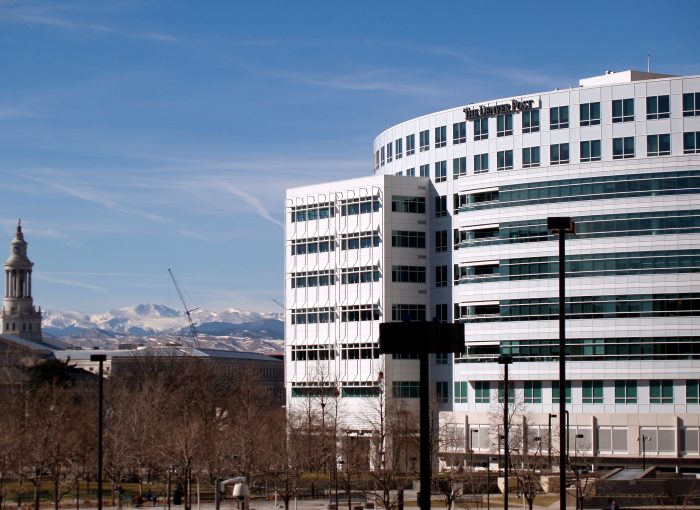
From Alden Global Capital to Sinclair Media, tales of corporate media takeovers of local news outlets — and their chilling effects — are everywhere. A new study published late last month in New Media & Society journal provides further evidence of the devastating consequences of corporate ownership.
The authors of the study looked at a sample of 31 corporate-owned papers and 130,000 articles published by these outlets before and after they were acquired.
The publications they examined ranged from The Denver Post (whose parent company was acquired by Alden Capital in 2010), the New York Daily News (initially acquired in 2017 by Tribune Publishing and then four years later by Alden), LA Weekly (acquired by Semanal Media LLC in 2017), and 28 papers in California published by Digital First Media (also owned by Alden).
Here’s an overview of what the study found:
1. Acquisition leads to a significant, but not disproportional, decrease in the volume of local content produced by local newspapers;2. Coverage of local places in the periods following acquisition is significantly more concentrated than coverage in the periods prior to acquisition;
3. Articles produced to be shared across regional hubs of newspapers are significantly less local—and discursively more national—than articles unique to a given newspaper.
While these changes weren’t unexpected to the authors of the paper, there were a few surprises. “What was so shocking to me is that all the acquisitions led to staffing changes almost immediately and an almost immediate drop in content,” said Benjamin LeBrun, an incoming graduate student in the department of linguistics at McGill University and the first author of the paper.
The changes in the decrease in local content varied from paper to paper.
In Denver, for instance, although the number of articles that dealt with local content increased briefly in the two years following The Post’s acquisition in 2010, from that high point in 2012 to 2018, there was a 68% reduction in the number of local articles published by the paper. Even with the New York Daily News and the LA Weekly, an alternative newspaper in Los Angeles, there wasn’t a relative decrease in the local content post-acquisition, but there was a reduction in the absolute number of local articles produced after they were acquired.This was a surprise to Andrew Piper, who is the senior author of the paper. “I was a little surprised that the proportionality didn’t really shift,” Piper, who is a professor in the department of languages, literatures and cultures at McGill University, said. “In other words, the newsrooms that are left are still kind of dividing their attention between local, national, regional [news], so that whoever’s left kind of keeping the ship afloat.”
To measure how the concentration of local coverage changed — in other words, whether local news continued to cover many cities and towns within a paper’s coverage area or whether coverage became more focused on the larger areas — the authors assigned values to geographic locations within a paper’s coverage area, starting with the city where the paper was located and slowly expanding further out. They then measured the mention of these different places weekly and compared these weekly calculations over time.
At the LA Weekly, mention of the rest of LA County outside the city of Los Angeles took the biggest hit following acquisition (mention of international locales, the rest of California and other parts of the country also decreased). At the New York Daily News, it was the coverage of the rest of New York state that was most reduced after the paper’s acquisition. At The Denver Post, coverage of the rest of Colorado and places abroad were most reduced.
Finally, the researchers looked at how coverage of national news at the local level matched coverage by national outlets, including Fox News and CNN, following corporate acquisition. They used machine learning to gauge how similar sets of words were being used at the local level that were also similar to the discourse at national outlets. For the Daily News and LA Weekly, there was no similarity post-acquisition, and the outlets were — at least in the case of LA Weekly — much more dissimilar to national outlets after acquisition.
With The Denver Post, however, the researchers found an increase in the discursive similarity following corporate ownership. And in the network of Digital First Media papers in California — because articles in this network of papers were often shared across the network — the common articles were more often national in nature than those articles that were specific to individual publications.
While these findings aren’t particularly new, they help to confirm what was already known, the authors say. One of the reasons for conducting the study “was really to translate a lot of all the intuitions that many of us had, about what was happening, and to kind of introduce ways that we can look at it on a larger scale [and] begin to answer potentially more complex questions about what’s happening.”As far as next steps and what kind of complex questions: “The obvious next step would be to understand, content-wise, beat-wise, what’s changing?” said Piper. “We don’t yet know these consequences.”
What this means for the future of local news, and especially the continued trend of corporate ownership? “An alternative model is absolutely necessary,” Piper said. “These acquisition events are decisive in hollowing out newsrooms, which means they can’t be relied on as a financial model of ownership and stewardship for local news.”
And even though Piper conceded that he doesn’t have a good answer for what that alternative model would look like, “Given what we’re seeing with the data, we absolutely need another way to conceptualize how local news is going to be produced, distributed, and supported.”